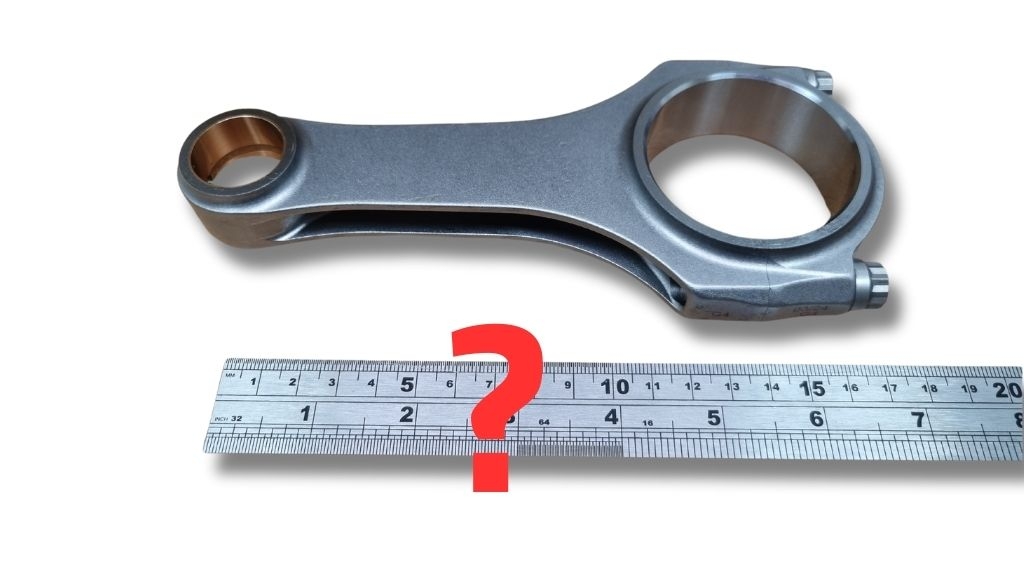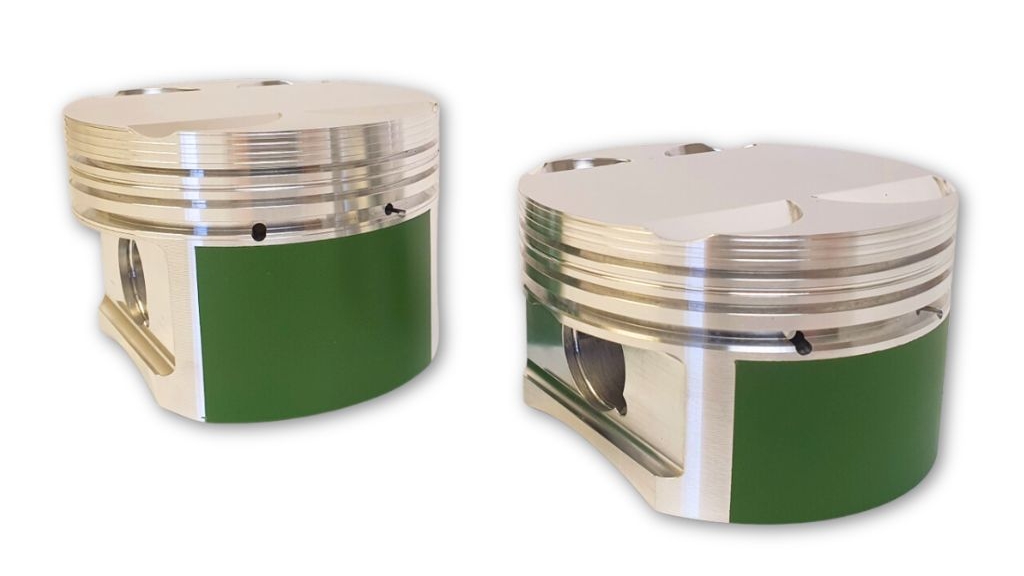CON ROD LENGTH TECH
You might notice that we stock two types of Cosworth YB piston: the first is for the standard length connecting rod, and the second is for the long rod. The long rod is 7.5mm longer that the standard rod, which is a significant increase. But why would you want to increase the rod length?

Rod length is defined as the distance between the small end and big end bore centres. Combined with the stroke, which is the distance that the piston travels, the rod length is an important parameter in the kinematics of the cranktrain. The rod length and stroke for an engine are sometimes expressed as the ‘rod ratio’, which is the rod length divided by the stroke.
It seems counterintuitive to increase the rod length. After all, this means that the deck height increases and the engine gets taller. But if the engine has already been designed, then one common aftermarket trick to get more power is to try and increase the rod length.
Here are four reasons why a longer rod length can help improve performance.
1. Longer Dwell
An increase in rod length allows the piston to spend more time near TDC (top dead centre). The change in geometry means that the compression can be held for around half a degree longer. It might not sound much, but that small increase in time can improve combustion efficiency and eek out a bit more power from the combustion process. This effect is normally more pronounced above the mid-range RPM.
2. Reduced Skirt Load
Increasing the rod length will reduce what is called “rod angularity”, which is the angle of the rod to the cylinder axis. This reduces the side load on the piston skirt, which helps in a number of ways. For a start, there will be less frictional losses between the skirt and the cylinder wall, which means that there will be more power transmitted to the crankshaft.
Another beneficial by-product that comes from reduced skirt load is an improvement in NVH (noise, vibration and harmonics). The YB piston already has an offset pin bore to help stop it sounding like a diesel tractor engine on a cold day, and long rods do a similar thing.
3. Reduced Secondary Forces
The secondary forces that are created by the reciprocating mass (which is a proportion of the rod mass plus the piston mass) are inversely proportional to the rod ratio. If the stroke is fixed and the rod length is increased then the rod ratio goes up and the secondary forces come down.
These secondary forces act at twice engine speed and as such can’t be balanced out by the crankshaft counterweights. Reducing the secondary forces by increasing the rod length helps to improve the balancing of the bottom end forces, which will reduce vibration.
4. Reduced Piston Mass
For a given deck height, increasing the rod length means that the pin bore needs to be pushed higher up in the piston. This can often lead to a lighter piston – in the case of our YB pistons, the mass reduces by 38g.

Of course, the rod mass will increase so there might not be an overall weight saving, but reducing the piston mass has a knock-on reduction in the inertia forces that the piston imparts on the gudgeon pin when the piston reaches TDC.
This means that there is less load, and hence less stress, in the pin bore, which can help to increase the durability of the piston.
The Long & The Short of It
Of course, the proof is in the pudding. Does running a longer rod actually give more performance? Well, one of our customers kindly tested the YB engine in both standard rod length and long rod length forms, and gave us this feedback. “We saw around between 5% and 10% increase in torque between the midrange and the top end of the power curve”, says the customer.
Running a longer rod length not only offers the potential of extra torque, but also can improve reliability and reduce NVH.
If you’d like to know more about the benefits of switching to a longer con rod then please get in touch.


